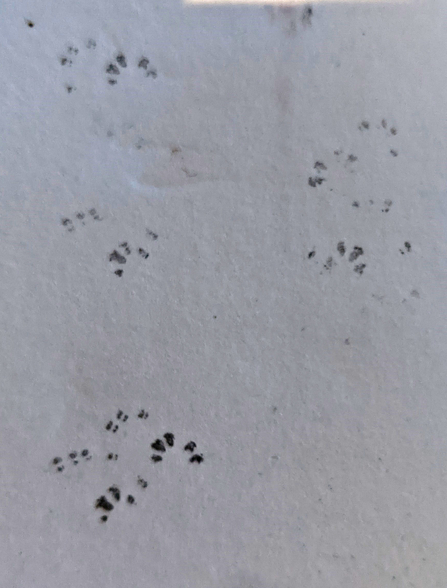Footprints of the elusive small mammal were found in a footprint trap set deliberately to try and find signs of the species at Hollybed Farm Meadows nature reserve not far from Castlemorton in the south of the county. Hazel dormice are protected by law and licensed surveyors use a number of methods to capture signs of their presence.
The harmless traps, which record the footprints of animals that pass through them, were set up in several hedgerows around the 40 acres nature reserve, which is undergoing restoration following its purchase in 2013.
Tomos Holloway, Worcestershire Wildlife Trust’s Reserves Officer responsible for the management of the reserve, explained “This is such exciting news. We had previously put up nesting tubes to survey for them from 2016 to 2019 but found no evidence. Not to be deterred, we tried again this year and have been delighted with the results!
“We’ve known for a little time that dormice are in the area and were really hoping that our sensitive management of hedgerows on and around our nature reserve would encourage them onto our land.
“We’re restoring the meadows at Hollybed but it isn’t all about the wildflowers in the fields; the whole nature reserve and, hopefully, the wider area need to work together as one large unit in order to maximise the benefit to wildlife and to us.”
Dormice are largely nocturnal and use hedgerows, understoreys of woodlands and trees to live in and to move through the countryside. Well managed hedgerows in particular offer a great source of food from nuts and berries to insects and flowers.
The sleepy creatures can spend more than seven months of the year in hibernation, tucked up at the base of trees or in hollows in the ground.

